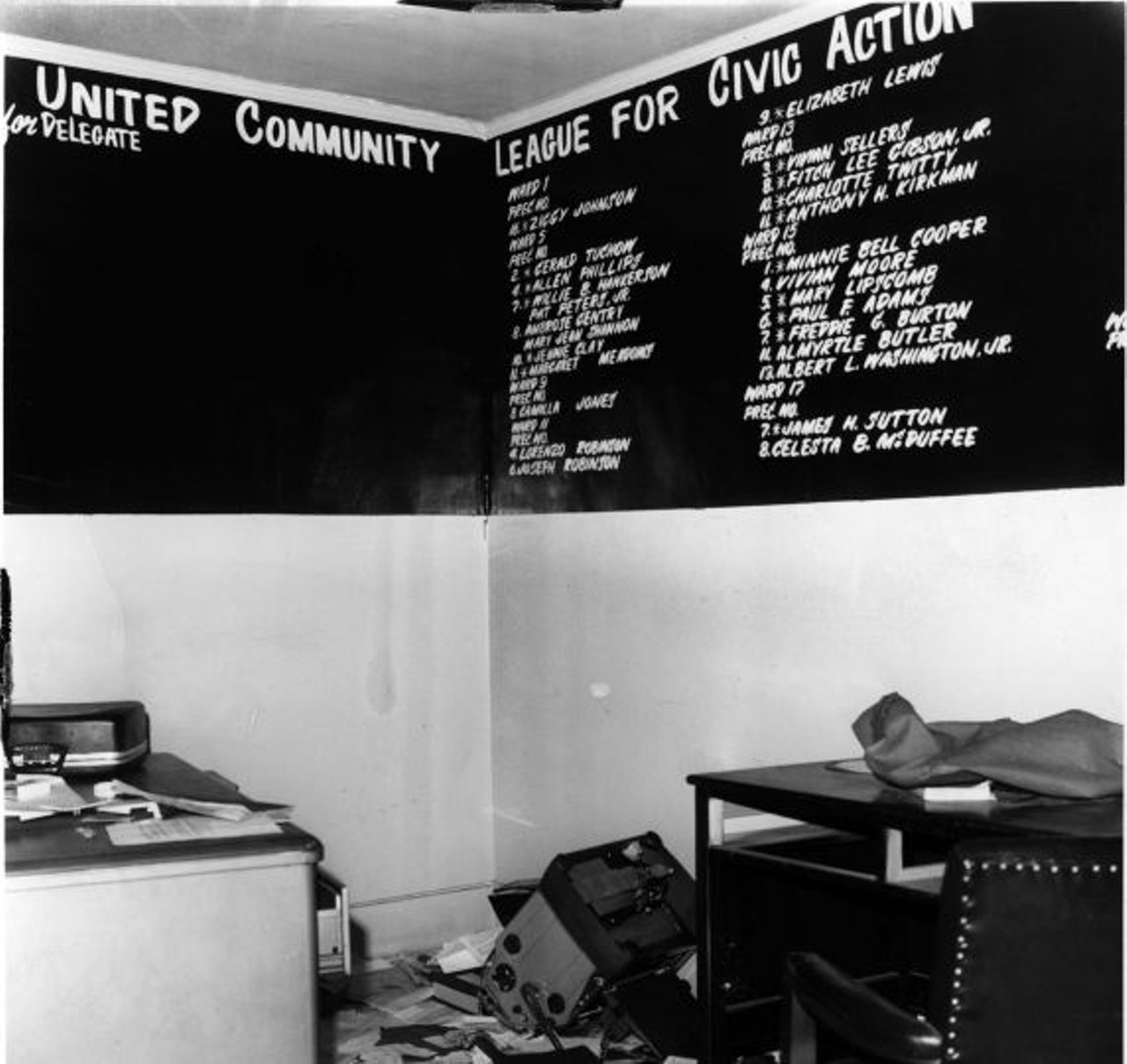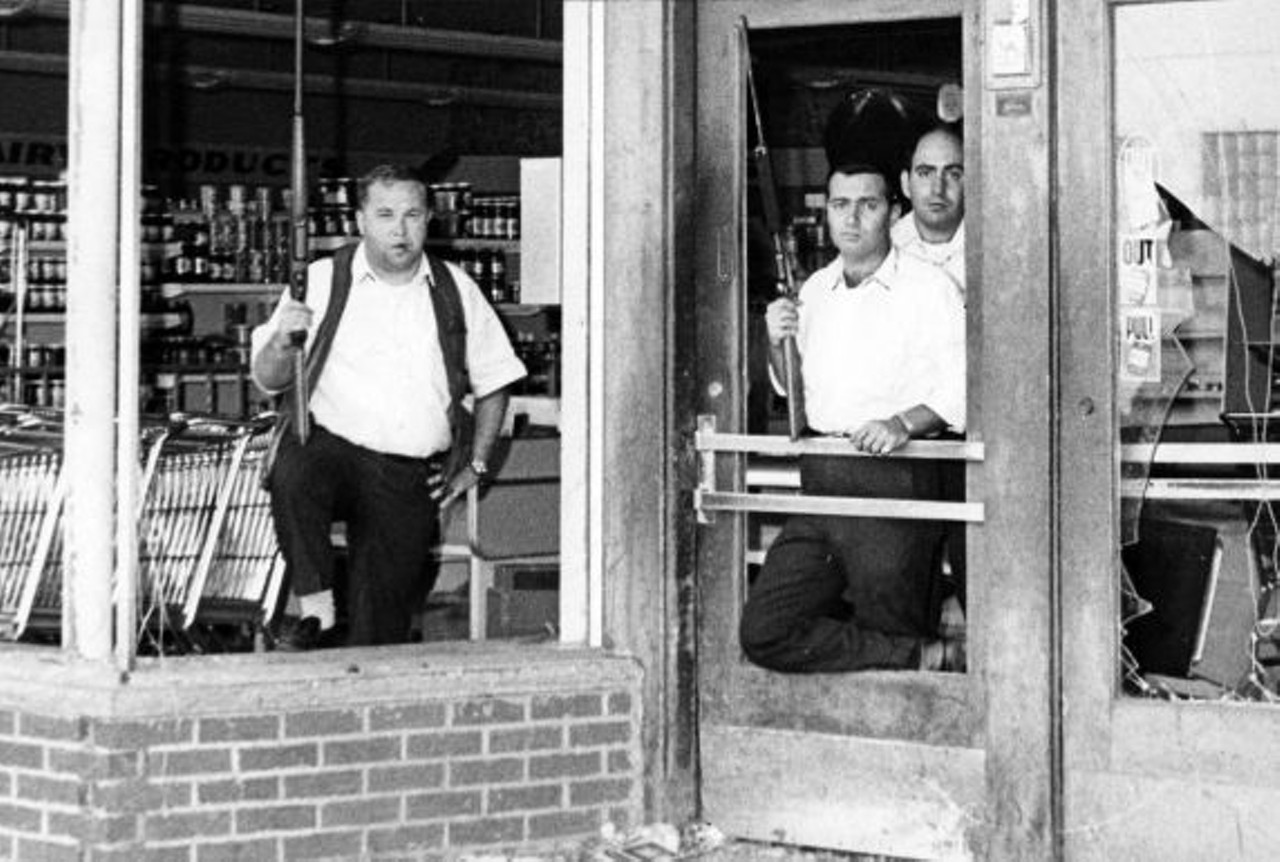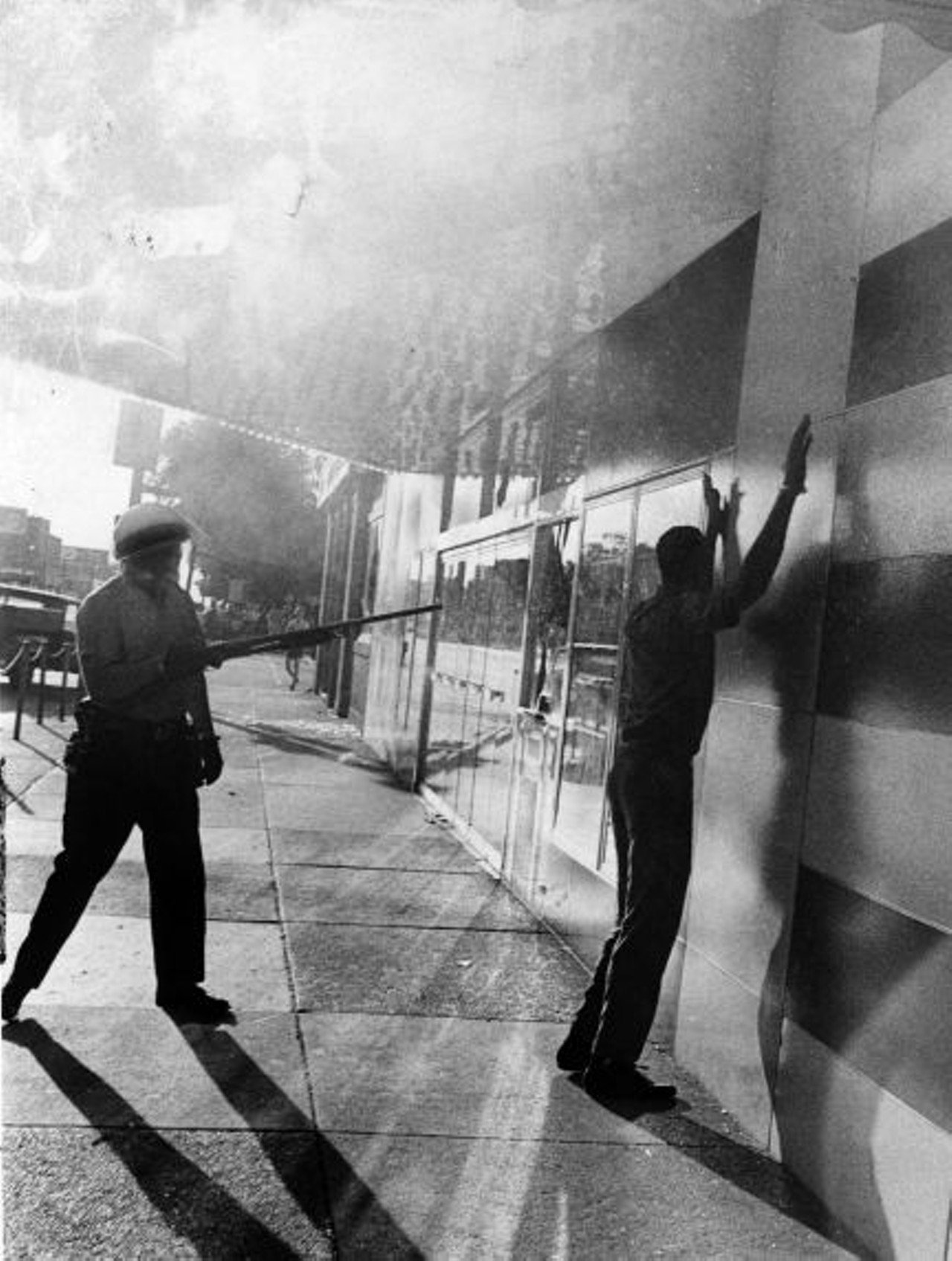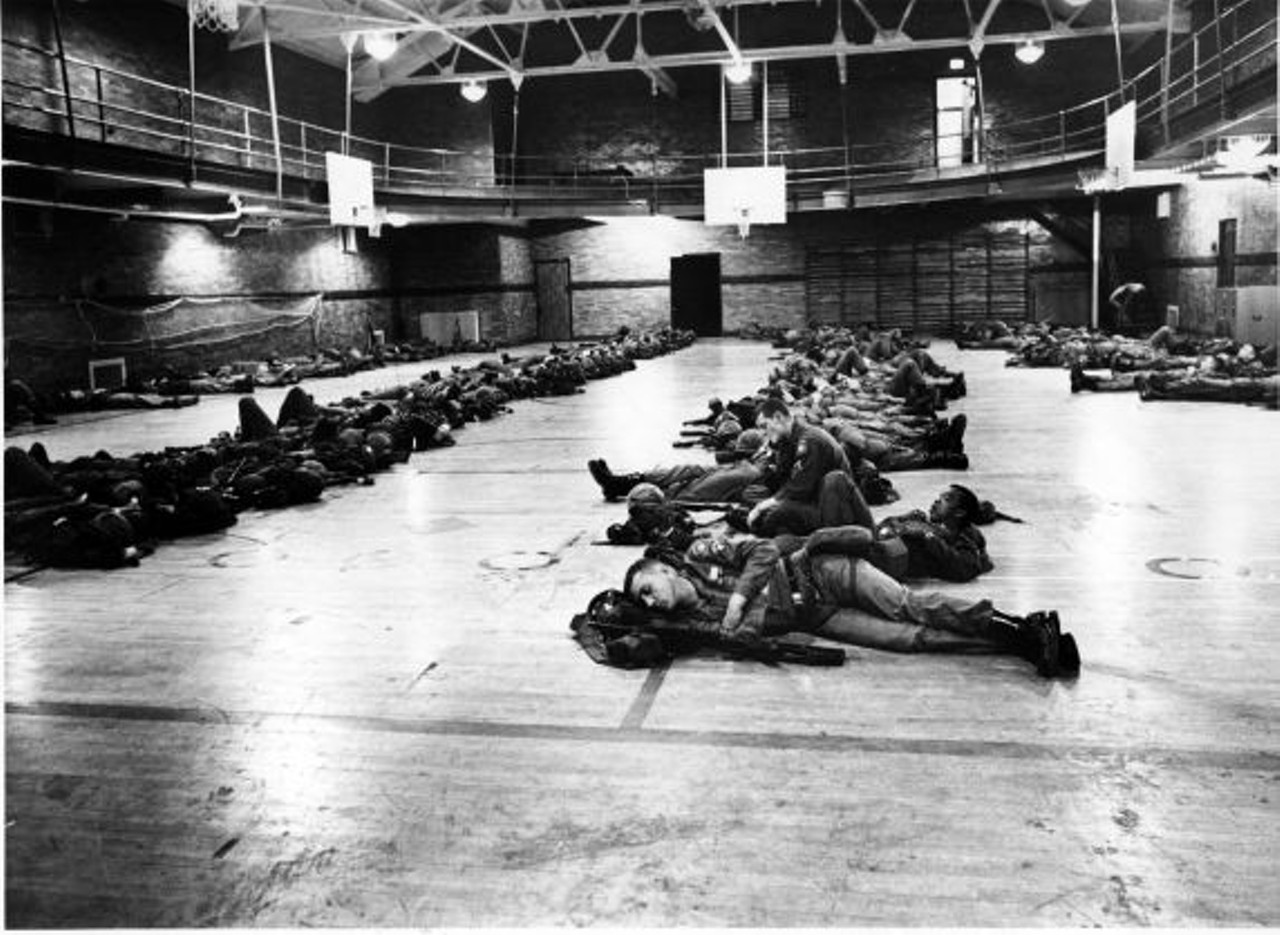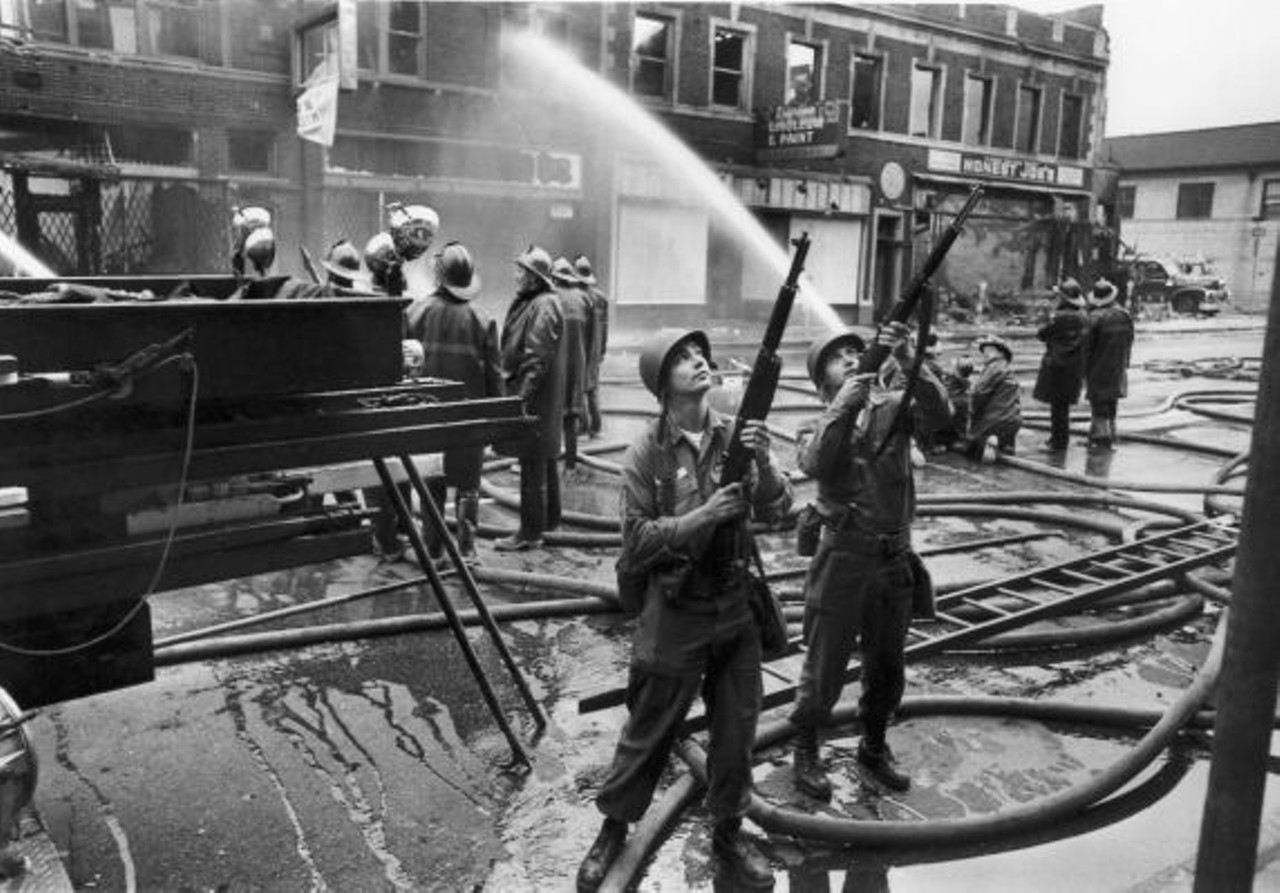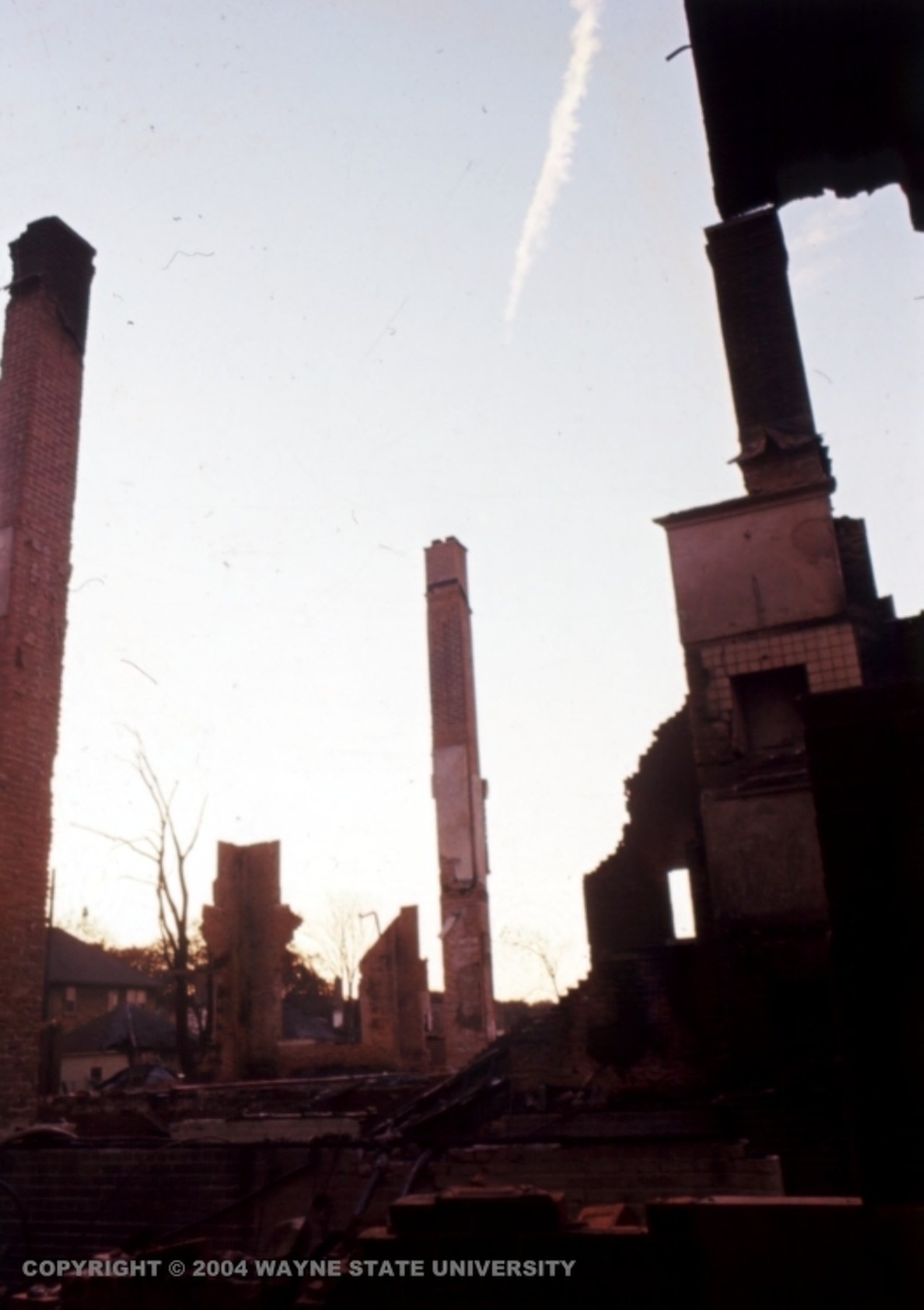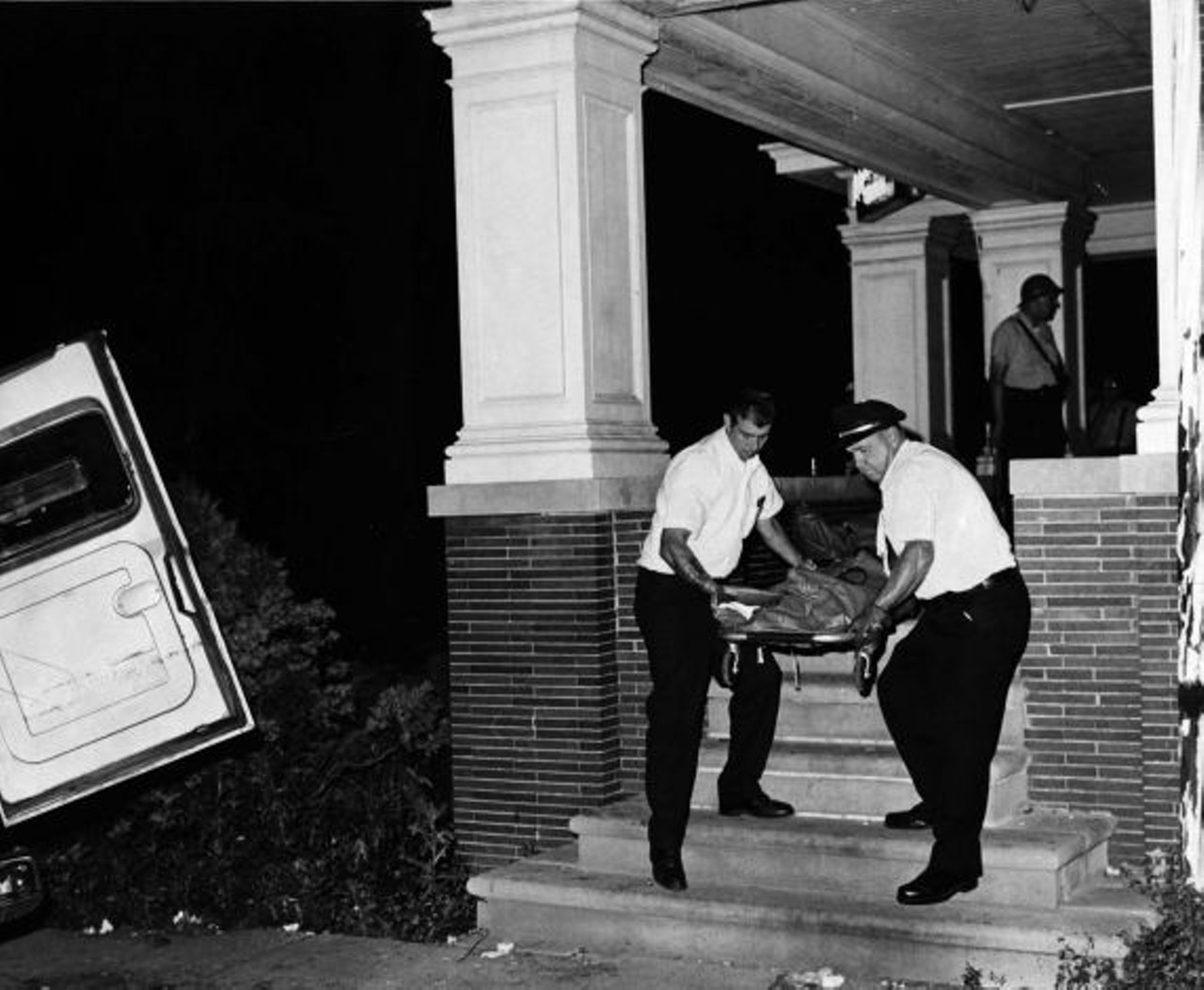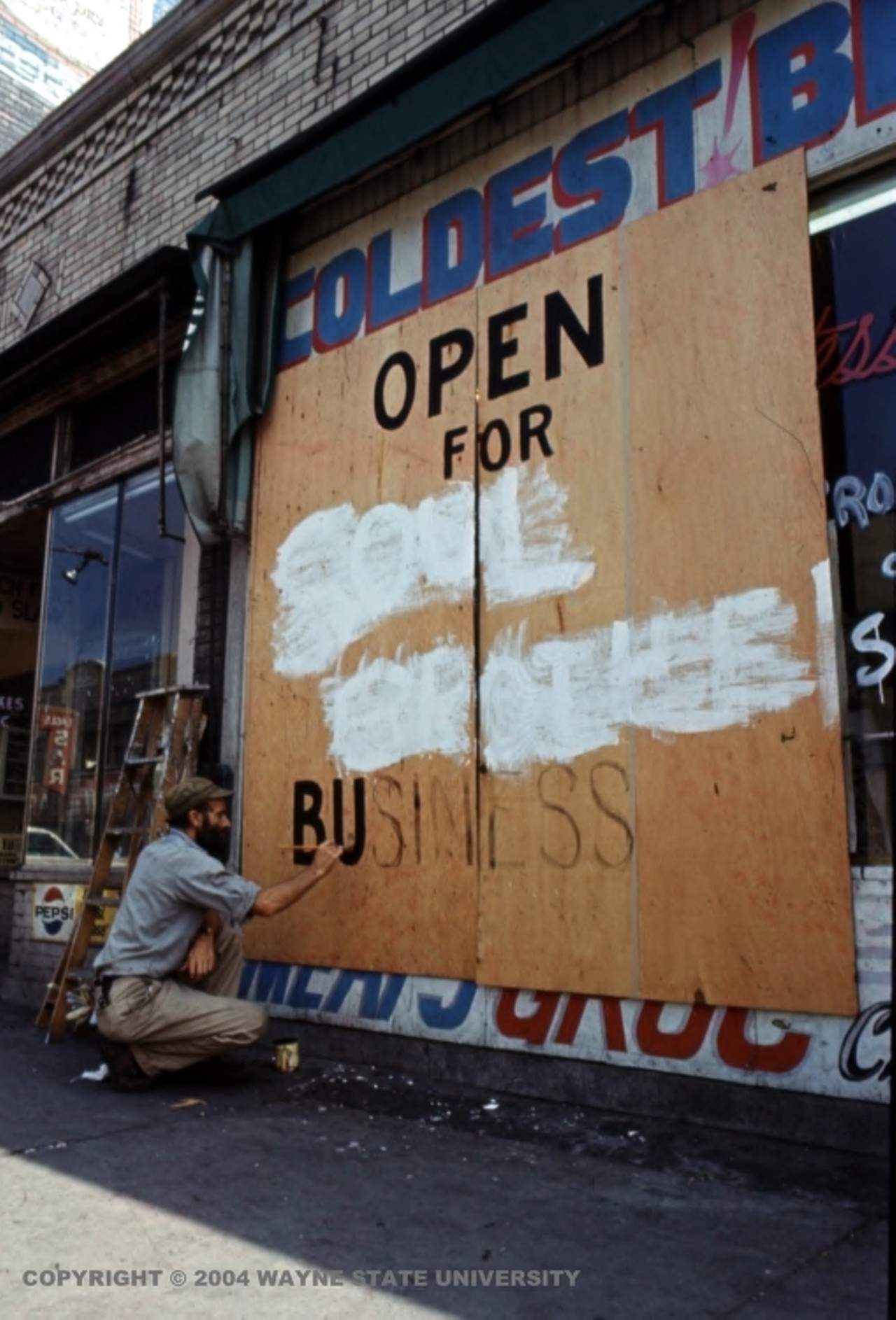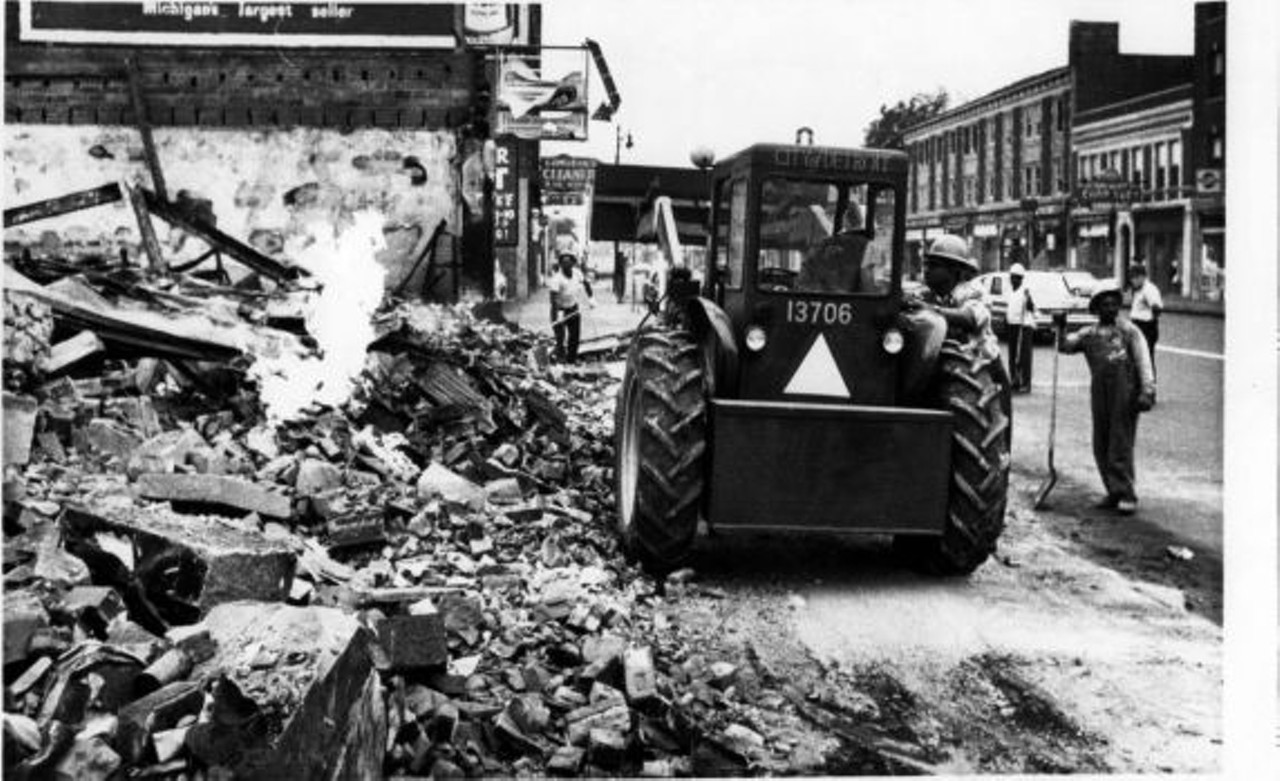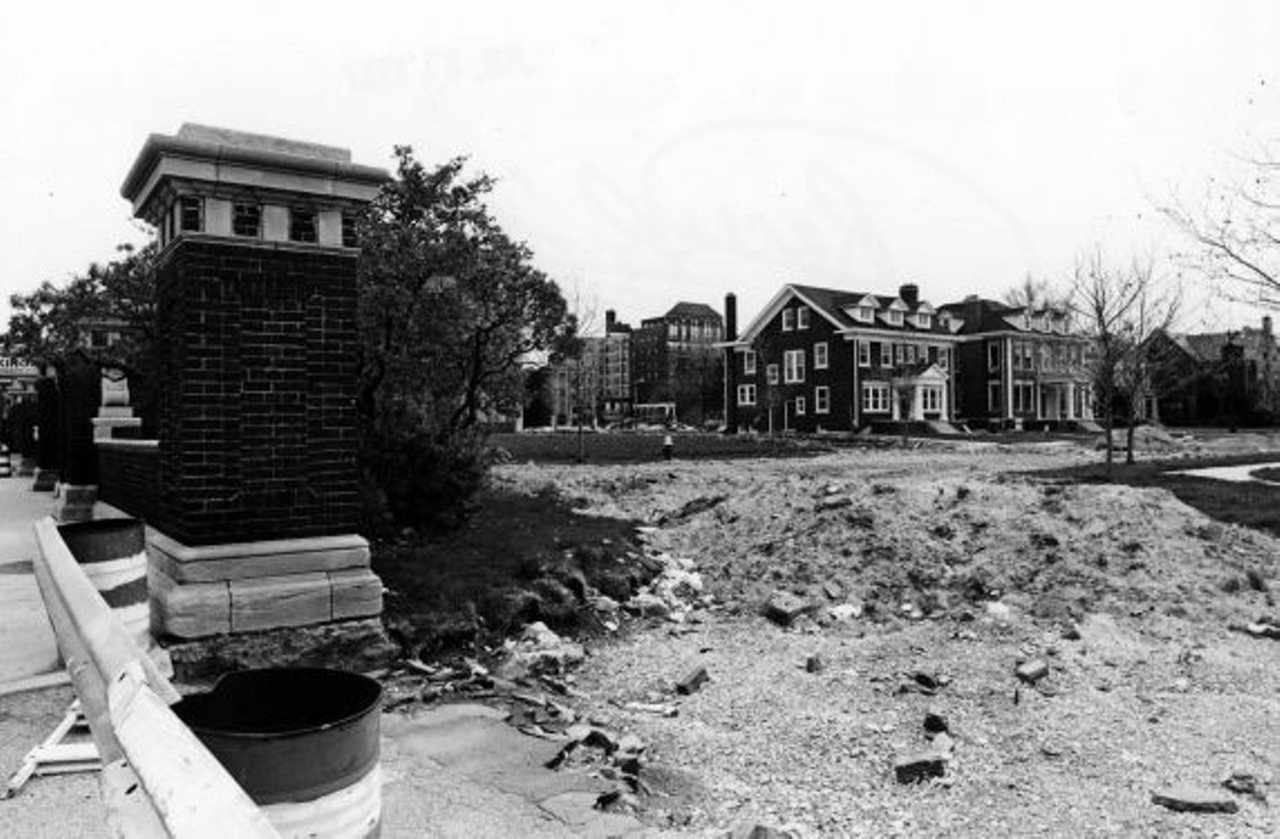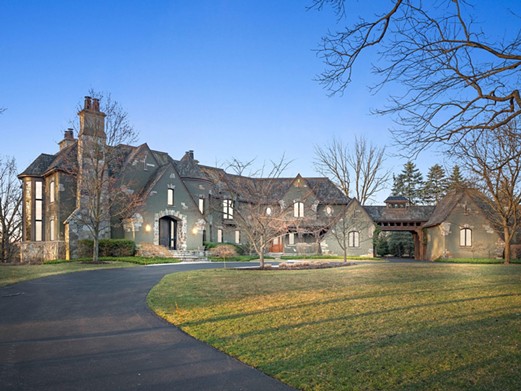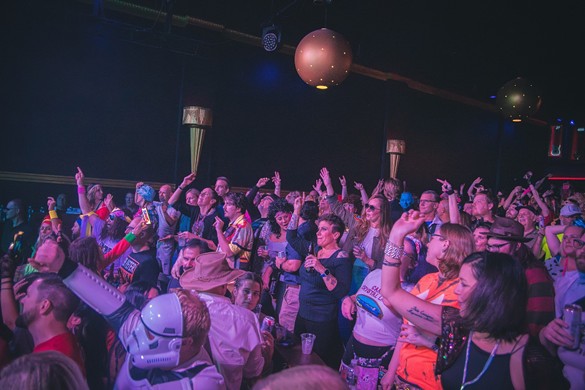Nearly five decades have passed since the 12th Street Riot, one of the most violent and costly urban revolts in U.S. history, though the scars it left on Detroit are still seen and felt today.
In the early morning hours of July 23, 1967, a raid on an unlicensed after-hours bar turned violent, and an uprising, fueled by reports of police brutality and driven by underlying conditions including segregated housing and schools and rising black unemployment, began. By the time the riots ended four days later by 7,000 National Guard and U.S. Army troops, 43 people were dead, 342 injured, and nearly 1,400 buildings had been burned.
By MT Staff Photos courtesy of the Detroit News Collection, Walter P. Reuther Library, Wayne State University. To see more photos, please visit the Virtual Motor City project.

